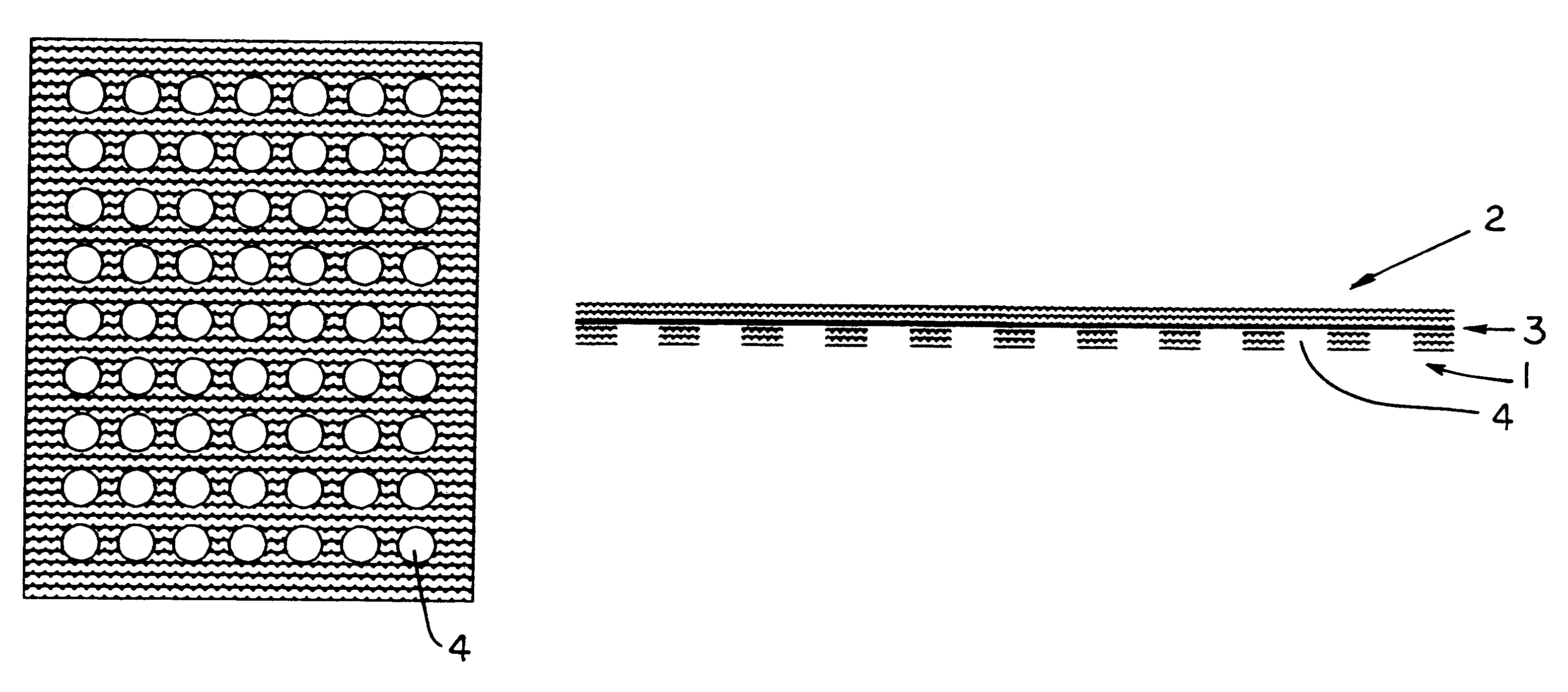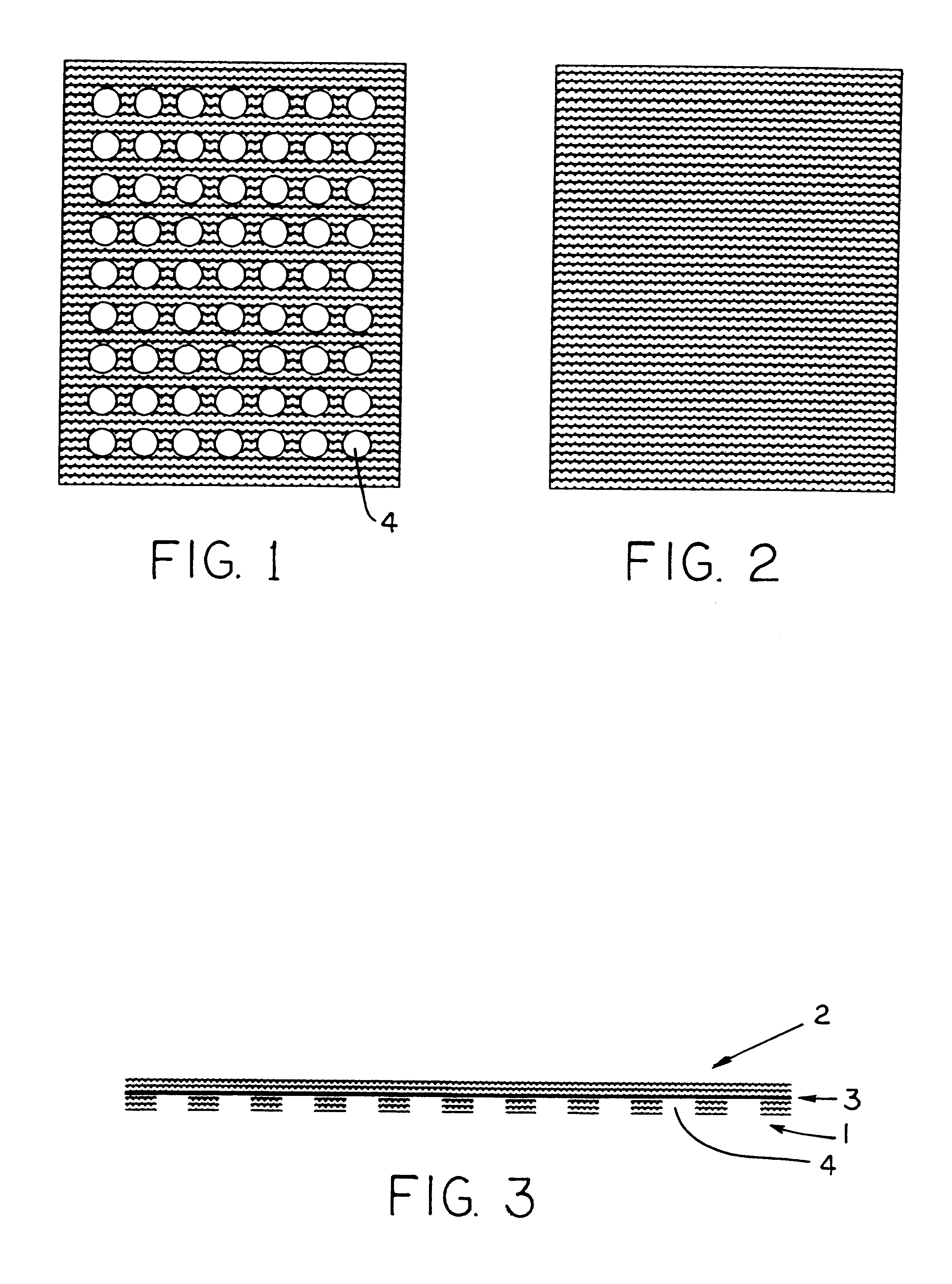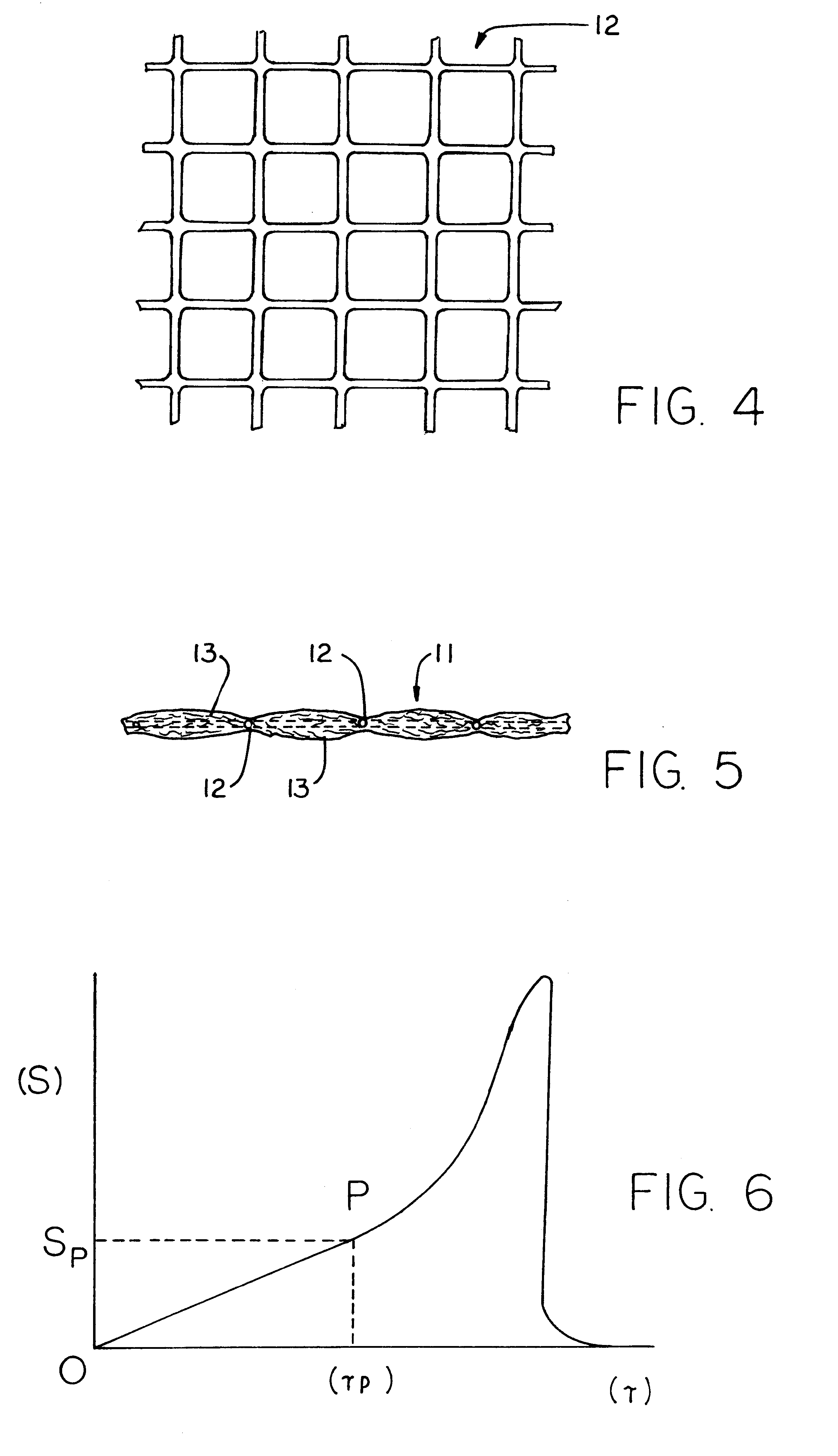Cleaning sheet with particle retaining cavities
a technology of cleaning sheet and particle retaining cavity, which is applied in the field of dust cloths, can solve the problems of cloth type becoming saturated with dust, cloth type may be less effective in picking up and retaining particulates, and dust cloths tend to leave an oily film on the surface after us
- Summary
- Abstract
- Description
- Claims
- Application Information
AI Technical Summary
Problems solved by technology
Method used
Image
Examples
example 2
Polyester fiber web having a basis weight of 10 g / m.sup.2 can be prepared by a conventional carding machine from polyester fiber 51 mm in length and 1.5 denier in diameter. The fiber web is lapped in 3 layers (30 g / m.sup.2) and layers of the lapped fiber web are overlaid on the upper and lower sides, respectively, of a biaxially shrinkable polypropylene net (mesh: 5, fiber diameter: 0.215 mm). The resulting combination is subjected to a water needling process to entangle the fiber webs and the net. The water pressure used in the water needling process is about 35-40 kg / cm.sup.2 at a nozzle pitch of 1.6 mm while the combination of fiber web and polypropylene net is moved past the nozzles at a line speed of 5 m / min. The hydroentangled combination is then subjected to heat treatment with hot air (130.degree. C.) for about 1-2 minutes to simultaneously dry the web and shrink the polypropylene net. This produces a reinforced nonwoven aggregate having an area shrinkage coefficient of 10% ...
PUM
| Property | Measurement | Unit |
|---|---|---|
| elongation | aaaaa | aaaaa |
| cross-sectional area | aaaaa | aaaaa |
| cross-sectional area | aaaaa | aaaaa |
Abstract
Description
Claims
Application Information
 Login to View More
Login to View More - R&D
- Intellectual Property
- Life Sciences
- Materials
- Tech Scout
- Unparalleled Data Quality
- Higher Quality Content
- 60% Fewer Hallucinations
Browse by: Latest US Patents, China's latest patents, Technical Efficacy Thesaurus, Application Domain, Technology Topic, Popular Technical Reports.
© 2025 PatSnap. All rights reserved.Legal|Privacy policy|Modern Slavery Act Transparency Statement|Sitemap|About US| Contact US: help@patsnap.com



